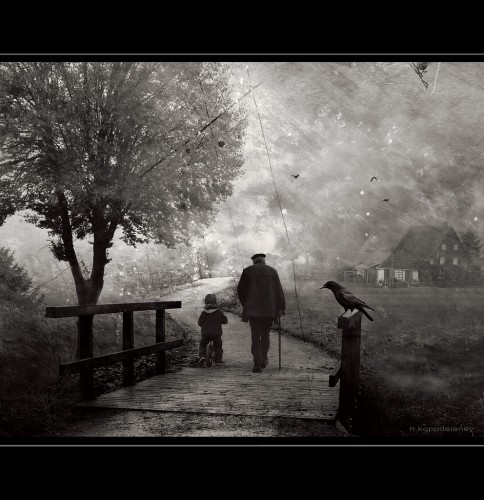
by Daniel Doen Silberberg | May 16, 2012 | Zen
The Magic Horse
A king had two sons. The first helped the people by working for them in a manner they understood. The second was called ‘Lazy’ because he was a dreamer, as far as anyone could see.
The first son gained great honours in his land. The second obtained from a humble carpenter a wooden horse and sat astride it. But the horse was a magical one. It carried the rider, if he was sincere, to his heart’s desire.
Seeking his heart’s desire, the young prince disappeared one day on the horse. He was absent a long time. After many adventures he returned with a beautiful princess from the Country of Light, and his father was overjoyed at his safe return and listened to the story of the magic horse.
The horse was made available to anyone who wanted it in that country. But many people preferred the obvious benefits which the actions of the first prince provided for them because to them the horse always looked like a plaything. They did not get beyond the outer appearance of the horse, which was not impressive – just like a plaything.
When the old king died, the ‘prince who liked to play with toys’ became, by his wish, the king. But people in general despised him. They much preferred the excitement and interest of the discoveries and activities of the practical prince.
This traditional Sufi teaching tale has a number of lessons about life and practice in it. Some are not obvious at first. Please contemplate it as a practice. After you have please share your interpretation with us.
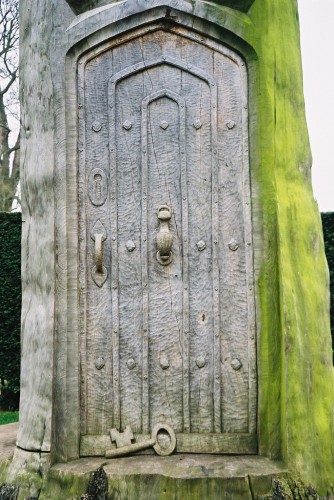
by Daniel Doen Silberberg | May 2, 2012 | Zen

We have the ability to become conscious of negative patterns that frighten us and hold us in place. We have the ability to expand our lives in ways that are liberating, exciting and enchanting. There is, however, a doorkeeper: a guard at the door. Our life, like any magical tale, is populated by many fantastic characters. The guard at the door often appears in our life’s magical tale as a towering monster who embodies our fear as well as our blame and lethargy.
However, the doorkeeper is really only our mechanical negative thoughts. Somewhere near the guard and the door is also a magic gem. It is called the stone of consciousness. This gem is found by going through a dark tunnel of doubt and habit and hopelessness. If we think we can’t go through this tunnel, it is of course impossible. The magic stone can help us go through. The stone becomes a light that we can shine on ourselves. In the ancient magical books this process is called self observation or objectivity. The rite of bringing consciousness to our life and actions.
The cost of bringing this light to our life and actions is letting go of the mechanical device called the mind of doubt and fear. We also must get rid of our lifelong companion Sir or Madam Victim.
Then we can use the magic stone to dissolve the doorkeeper and enter our lives fully.
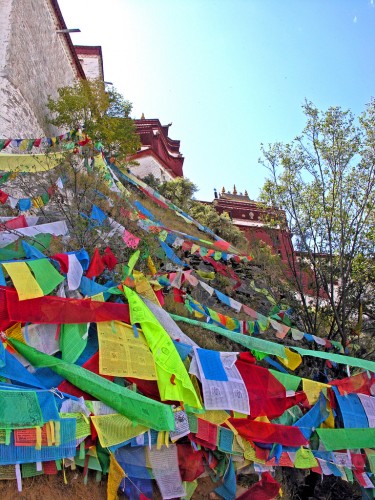
by Daniel Doen Silberberg | Apr 17, 2012 | Zen
There is a Zen tale about a person that sits a very long time (Kalpas) but does not achieve Buddhahood. When we look into this story we understand that the reason for this lack of attainment is that one cannot attain what one already is. Another way we might put this is that we cannot “go”somewhere if we are already there. At that point we “understand” the Zen tale, but do we really?
Often there is a great deal of emphasis on progress in our practice, progress in the “Way.” But where are we going? What are we attaining? The old masters tell us we are already wearing Buddha’s clothes. We are eating his food. This implies that we are already living Buddha’s (the enlightened one’s) life.
So there is a gap in our understanding. On one hand we have an inkling of the fact that we are leading the life of enlightenment and on the other hand we want to make progress in this understanding.
In reality this gap in our understanding is not so difficult to close. It does take time. We call closing this gap between what we understand intellectually and what we experience – practice. Simple as that.
What a wonderful practice it is to learn to appraeciate each moment as enlightement. Putting ourself into our life totally and not making progress.
It is exactly this appreciation of this very life and this very moment and wonderful lack of progress that is progress in “the Way”.
Photo by Dennis Jarvis

by Daniel Doen Silberberg | Apr 4, 2012 | Uncategorized, Zen
This is an excerpt of a video we made on Zen Arts as a “Way”.
“A Way” is a path to realizing our true nature and our innate capacity using an external activity which can be anything from writing to tea ceremony.
Western arts can be used as well as the traditional Japanese practices. Zen “ways” can include things we don’t usually even consider art. Being an entrepreneur or a cook would be an example of that. You can think of it as using external activity to appreciate the reality of our internal state.
“The Way” can then be used to see our internal state and to cultivate its growth.
 photo credit: monsieur-g
photo credit: monsieur-g
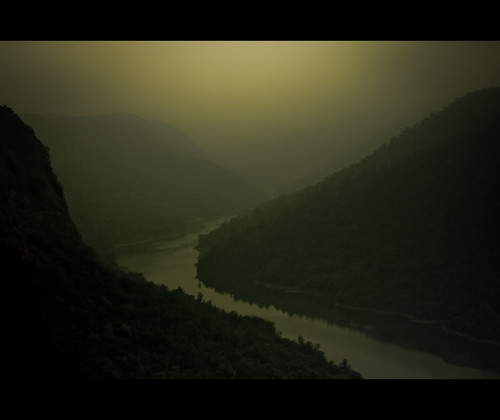
by Daniel Doen Silberberg | Mar 21, 2012 | Uncategorized, Zen

The content of this post inaugurates Lost Coin’s Zen Arts Month which began on the first day of spring.
Zen is the realization and art of this very moment.
Han Shan’s Cold Mountain poem invites us in.
Who takes the cold mountain road
takes a road that never ends
the rivers are long and piled with rocks
the streams are wide and choked with grass
it’s not the rain that makes the moss slick
and it’s not the wind that makes the pines moan
who can get past the tangles of the world
and sit with me in the clouds?
Han Shan’s landscape is always here.
Who can get past the tangles of the mind and meet him on Cold Mountain?
 photo credit: NJ..
photo credit: NJ..
![Winter Light]()
by Daniel Doen Silberberg | Feb 27, 2012 | Uncategorized, Zen
Our light is sometimes described as a white light. This does not mean that it is the color white but that it has no color at all. In order to discover it we must forget about our eyes, ears, nose, sense of touch, emotions, and thoughts. We must leave ourselves behind. Then there is of course, nothing to find the light with and no way to find the light.
If after we have done all this, we can make our way to this light then it is the lost coin, the true light.
 photo credit: Pink Sherbet Photography
photo credit: Pink Sherbet Photography

by Daniel Doen Silberberg | Feb 17, 2012 | Uncategorized, Zen

‘The bright and shining mind is never absent but is colored by the thoughts and emotions people put on it”
Shayamuni Buddha from the Anguttara Nikaya
And the thoughts and emotions we cling to are what the Buddha refers to as attachment. We become so attached to our thoughts about the world, that for us these thoughts and states become the real world.
Yes, but aren’t our thoughts real?
Yes they are really thoughts.
Perhaps we cling to our thoughts to avoid what we see as the real world. The world of disease, loss, old age and death. The world in which everything is impermanent.
But we have a choice. The road the Buddha took. Instead of thinking about the world of impermanence and suffering we can embrace it, become one with it. This is practice and the road to liberation.
What would it be like to completely accept everything that comes with life and death, completely?
It would be to cross over to the other shore.
This shore.
 photo credit: A Chilling Soul
photo credit: A Chilling Soul

by Daniel Doen Silberberg | Feb 2, 2012 | Uncategorized, Zen

Happy Groundhog Day!
For those of you who live in Europe and may not have heard of Groundhog Day, it was wonderfully explored in a Bill Murray film of the same name. In it, Bill Murray lives the exact same day, over and over again. In short, he founds out how life is for most of us. He also finds out that he is a “minor god”: http://www.youtube.com/watch?v=euY1jeZu9kI
Here, in the States, it is a day in which the length of winter is predicted when a groundhog comes out of the ground in Punxsutawney Pennsylvania today, February 2. If he casts a shadow, winter is far from ending. If he does not, spring is about to come.
We have chosen this day to release the February updates to the Study Center. These include three new videos in the video library which continue our curriculum for Lost Coin. Two of these videos are under the Training component and one is under Realization. There is also an audio from the recent Intensive, Practicing Relationship, as well as three Zen poems in the writing section of Conscious Art by well-known adepts with open Dharma eyes.
We have also included some writings of Takuan which are our first offerings in the new Performance and Excellence section. A thousand years later Takuan’s teachings are as alive today as they were then. Additionally there are two new musical compositions in the musica section intended to focus on the art of improvisation.
With this much new material, we feel confident that anyone can break the chain of samsara and stop living the same day over and over.
One again, Happy Groundhog Day.
 photo credit: Alan Vernon.
photo credit: Alan Vernon.
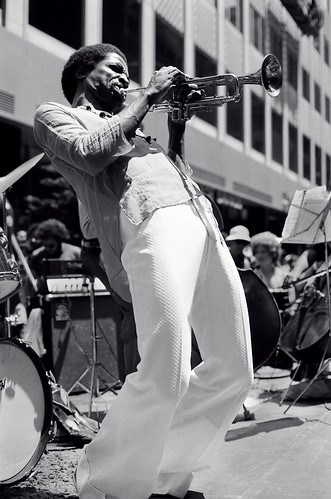
by Daniel Doen Silberberg | Jan 28, 2012 | Uncategorized, Zen

We all seek approval from others and if we are students of the way it is natural to seek the approval of our teacher. The prerequisite for our teacher’s approval is that we have earned our own approval.
A good teacher will show you how to win your own approval. It requires effort, commitment,determination and sincerity. If that work is done properly your teacher will give you his or her approval, which is a very special kind of empowerment. It is the empowerment of the lineage.
To do this it is often necessary to give up a great deal of self deceit, complacency and self- soothing.
Aside from approval and empowerment when we let go of our pretended self-satisfaction we can really hear the Dharma. We hear it with the whole body and mind. We see it with the the ear. We hear it with the eye.
Then we can manifest with the whole body and mind. With the wind of our own understanding and that of the lineage at our backs we can blow into the Dharma trumpet that is our life with a breath that comes not from the lungs, nor from the abdomen but from our feet.
 photo credit: Tom Marcello
photo credit: Tom Marcello

by Daniel Doen Silberberg | Jan 16, 2012 | Uncategorized, Zen

Every day Master Zuigan Shigen used to call out to himself, “Oh Master!” and would answer himself, “Yes?” “Are you awake?” he would ask, and would answer, “Yes, I am. Never be deceived by others, any day, any time.”
“No, I will not.”
I just taught a workshop on relationship. When I began, I said that the first issue and last would be that it is up to us – to “I”. Not to the other.
We say:
“I take refuge in the Dharma (The teaching). “I” take it .
“I take refuge in the Buddha (In my true nature). “I” take it
“I take refuge in the Sangha (The community) “I” do it.
Being a “master” means the work of mastering oneself. We do not need that word “master” The word “I” works very well.
Who is responsible for our life? Who creates the causes that manifest as effects. “I do.”
Who will create our relationships? Who creates the causes that manifest there? “I do.”
As in a marriage, “I do”
We have the opportunity to take our power back every day, all our life as Zuigan suggests.
Not power over others, power over the self.
Do not be deceived by others.
Do not blame others.
This is the Way.
I take refuge in the Dharma.
This post is dedicated to the memory of George Ivanovitch Gurdjieff who was born and certainly was alive after his birth date of January 13th, probably in 1877.
 photo credit: David Spender
photo credit: David Spender










Recent Comments